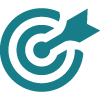1.2: Communicating in the Digital Age
Learning Objectives
 6. Distinguish between personal and professional uses of communications technology in ways that ensure career success and personal health.
6. Distinguish between personal and professional uses of communications technology in ways that ensure career success and personal health.
7. Integrate appropriate technology and design fundamentals to support communication objectives (ENL1004 Course Learning Outcome 3.2).
8. Identify the value, limitations, and hazards of Generative AI and other transformative technologies (ENL1004 Course Learning Outcome 4.4).
Honestly, how many instant messages (texts, chats, DMs, etc.) do you send in a day? How many emails? Do you prefer communicating online instead of in person with people? What about with businesses? If you’re anything like the average person who sends out anywhere from 50 to 130 instant messages per day across all platforms (Blagojević, 2023), that’s a lot of reading and responding quickly in writing—so much more than people were doing 20 years ago. Even if just for social reasons, you are probably writing more than most people in your demographic have at any point in human history. This is mostly an advantage because it gives you a baseline comfort with the writing process, even if the quality of that writing probably isn’t quite where it should be if you were doing it for professional reasons.
Where being overly comfortable with instant messaging becomes a disadvantage, however, is when it is used as a way of avoiding the in-person, face-to-face communication that is vital to the routine functioning of any organization. As uncomfortable as it may sometimes be, especially for early-to-mid-adolescent teens in their “cringey awkward years,” developing conversational skills throughout that decade is hugely important. They will go on to enter a workforce mostly managed by older generations who grew up without smartphones, developed those advanced conversational skills the hard way by making mistakes and learning from them, and expect well-developed conversational skills of younger generations entering and staffing their workplaces.
Phone/chat-based customer service and online business aside, there really is no good substitute for face-to-face interaction. In a study on the effectiveness of in-person requests for donations versus requests by email, for instance, the in-person approach was found to be 34 times more successful (Bohns, 2017). We instinctively value human over machine interaction in many (but not all) situations we find ourselves because, as a species, we honed that communication channel through millions of years of evolution. Though some jobs like nurse or early childhood educator simply cannot function without in-person interaction and will likely be the last to be automated (if ever), most others will involve a mix of written and face-to-face communication.
Your responsibility in handling that communication channel mix requires your competence and even mastery of technologies that bring you a competitive advantage in your work. With the advent of cloud computing in the 2010s, for instance, the ability to collaborate with individuals or teams anywhere and anytime on mobile devices, as well as secure your work in ways you couldn’t when files were tied to desktop or laptop computers, became an advantage that evolved into an expectation. For many professionals, this expectation quickly became a necessity with the pivot to remote work during the Covid-19 pandemic of the early 2020s, proving that adaptability is the key to survival.
Likewise, with the advent of widely available large-language-model generative AI (genAI) starting with OpenAI’s ChatGPT in the midst of the pandemic, you could then use a variety of AI tools to ideate (generate ideas), draft, and edit text, as well as accomplish a variety of other routine work tasks. As long as you retained the human element in your work where it is valued by your audiences, you could use AI to achieve efficiencies and increase both your productivity and quality of work. In the years ahead, well-paying jobs may not be replaced entirely by AI, but if you aren’t using AI to do those jobs better than someone who isn’t, you can be replaced by someone who will. In the years ahead, novel technology trends will offer up yet more new advantages with new devices and apps that you must master to stay competitive; those who don’t will find themselves underemployed or stagnating in precarious, low-wage gig-work.
Those advantages are double-edged swords, however, so it’s important that you manage their associated risks. With so much mobile technology enabling us to communicate and work on the go, from home, or anywhere in the world with a Wi-Fi connection, you may be expected to be always available to work, to always be “on”—even after hours, on weekends, and on vacation—lest you lose a client or project to someone else who is available at those times. Unless your workplace has policies that respect work-life balance, the early bird gets the worm. Add to that the psychological and physiological impacts of adults averaging 7-9 hours of screen time per day (Duarte, 2025; Twenge, 2017; Dunckley, 2014), and it’s no wonder that problematic technology use, including screen addiction, has long been a concern among both health and technology experts (Phillips, 2015). Then throw the harms of an extremely disruptive AI technology on top of that pile (e.g., Ahmad et al., 2023), and you now have to be a disciplined defender against screen-based technologies’ relentless efforts to capture your attention (EAVI, 2023). Beyond being an effective communicator and professional in general, just being a proper person—in the sense of maintaining a healthy balance physically and mentally—requires knowing when not to use technology.
In the workplace, however, especially if it’s a traditional office environment, you must be savvy in knowing which technology to use rather than always reaching for your smartphone out of adolescent habit. The modern office offers up a variety of tools that increase productivity and raise the bar on the quality and appearance of the work expected of you. Besides the technologies mentioned above, you may also have to be competent in the use of industry-wide software such as Microsoft Office 365, social media for business, a variety of presentation technologies, voice and video conferencing, company intranets, multifunctional printers, and so on. Mastery over these technologies and apps ensures that your communication looks and functions on point rather than in an antiquated way that makes you look like you stopped trying years ago.

All such technology will change rapidly in your lifetime. Some will be outmoded and disappear completely, and new devices and software will emerge and either dominate or also fade away and disappear. So long as others are using the dominant technology for an advantage in your line of work, it’s on you to use it as well to avoid falling behind and getting stuck on obsolete technology that fewer and fewer people use. Depending on how driven to succeed you are, you would be wise to even get ahead of the curve by adopting emerging technology early to take advantage of the competitive edges they bring, while also doing so carefully to avoid their potential harms to yourself and others.
Key Takeaway
 Use an array of commonly used communications technology to maintain a competitive advantage, and know when to put it all away in favour of in-person communication.
Use an array of commonly used communications technology to maintain a competitive advantage, and know when to put it all away in favour of in-person communication.
Exercises
 1. Keep a daily journal recording the length of time you spend using various screen devices such as your smartphone, tablet, laptop, desktop, TV, etc. Also record the amount of time you use these for school-related activities, social networking, entertainment (which you can further break down into passive viewing, such as watching Netflix, YouTube, or TikTok videos, and interactive use such as gaming). What conclusions can you draw from quantifying your screen time? Are your habits consistent each day or throughout the week? Explain what benefit you derive from these activities and how they might help and hinder your professional development.
1. Keep a daily journal recording the length of time you spend using various screen devices such as your smartphone, tablet, laptop, desktop, TV, etc. Also record the amount of time you use these for school-related activities, social networking, entertainment (which you can further break down into passive viewing, such as watching Netflix, YouTube, or TikTok videos, and interactive use such as gaming). What conclusions can you draw from quantifying your screen time? Are your habits consistent each day or throughout the week? Explain what benefit you derive from these activities and how they might help and hinder your professional development.
2. Record how many texts and instant messages you send and receive per day over the course of a week. Count how many you sent because you had good reason to do so in writing (as opposed to phone call), such as to reply in the same channel you received a message or to send a message quietly so as to avoid disturbing others around you (e.g., in class or late at night). Identify how many messages you could have exchanged merely by calling the person up and having a quick back-and-forth or waiting to talk to them in person. What conclusions can you draw from quantifying your messaging habits?
3. Research future technologies that might revolutionize the work you’re training to do. Bearing in mind the job description on the Government of Canada’s Job Bank Explore Careers by Essential Skills page, what tasks identified there can be automated? What tasks will still require a human element that can’t or shouldn’t be automated?
REFERENCES
Ahmad, S. F., Han, H., Alam, M. M., Rehmat, M. K., Irshad, M., Arraño-Muñoz, M., & Ariza-Montes, A. (2023, June 9). Impact of artificial intelligence on human loss in decision making, laziness and safety in education. Humanities and Social Sciences Communications, 10, 1-14. https://www.nature.com/articles/s41599-023-01787-8
Blagojević, I. (2023). Texting statistics. 99 Firms. https://99firms.com/blog/texting-statistics/#gref
Bohns, V. K. (2017, April 11). A face-to-face request is 34 times more successful than an email. Harvard Business Review. https://hbr.org/2017/04/a-face-to-face-request-is-34-times-more-successful-than-an-email
Duarte, F. (2025, April 24). Alarming average screen time statistics (2025). Exploding Topics. https://explodingtopics.com/blog/screen-time-stats
Dunckley, V. L. (2014, February 27). Gray matters: Too much screen time damages the brain. Psychology Today. https://www.psychologytoday.com/blog/mental-wealth/201402/gray-matters-too-much-screen-time-damages-the-brain
EAVI. (2023, May 7). How platforms compete to get our attention? EAVI: Media Literacy for Citizenship. https://eavi.eu/platforms-competing-to-get-our-attention/
OpenAI. (2025). ChatGPT (May 14 version) [Large language model]. https://chatgpt.com/
Phillips, B. (2015). Problematic technology use: The impact of capital enhancing activity. Association for Information Systems Electronic Library. http://aisel.aisnet.org/cgi/viewcontent.cgi?article=1003&context=sais2015
Twenge, J. M. (2017, September). Have smartphones destroyed a generation? The Atlantic. https://www.theatlantic.com/magazine/archive/2017/09/has-the-smartphone-destroyed-a-generation/534198/

